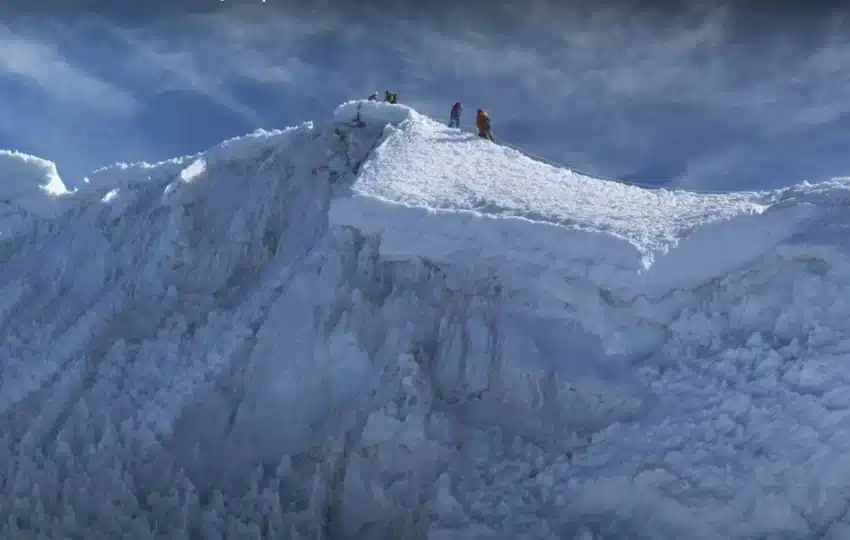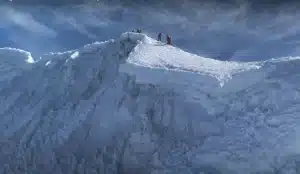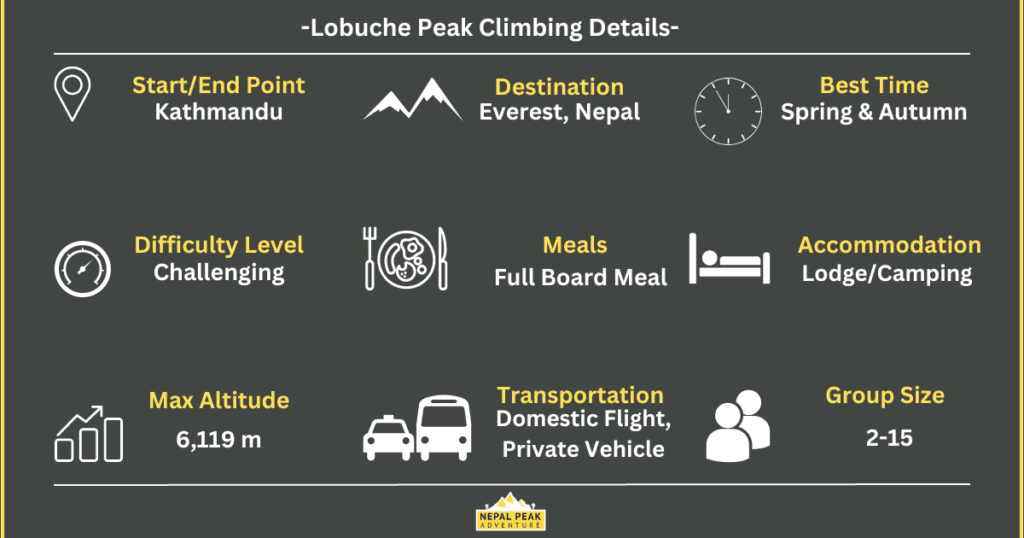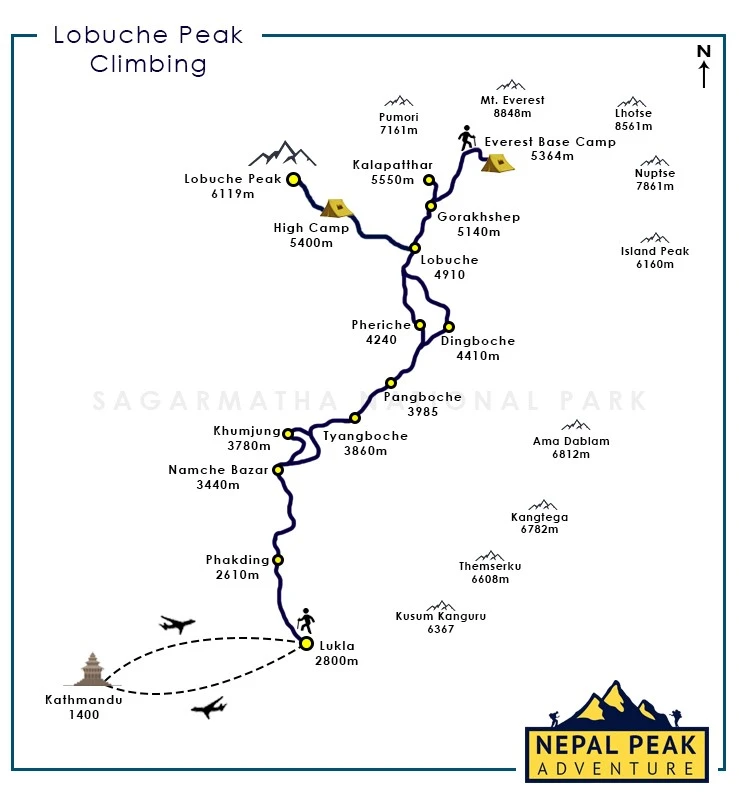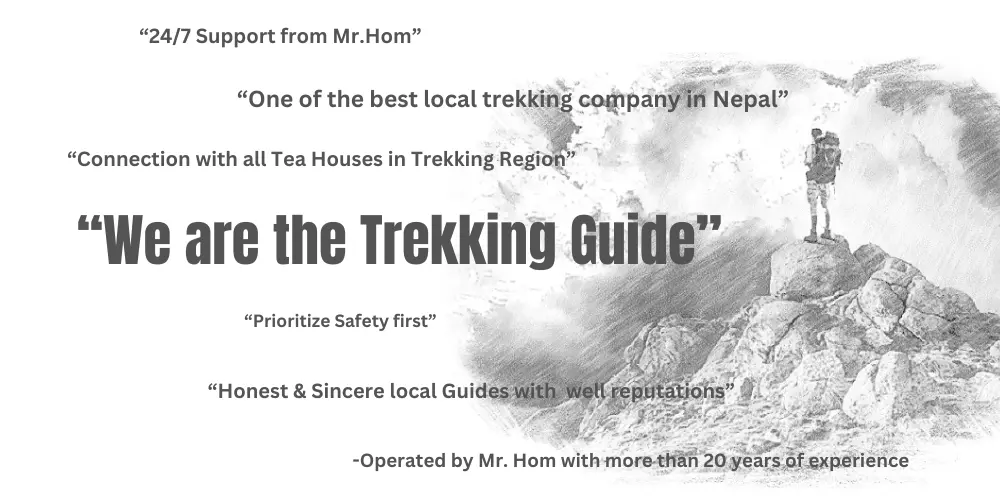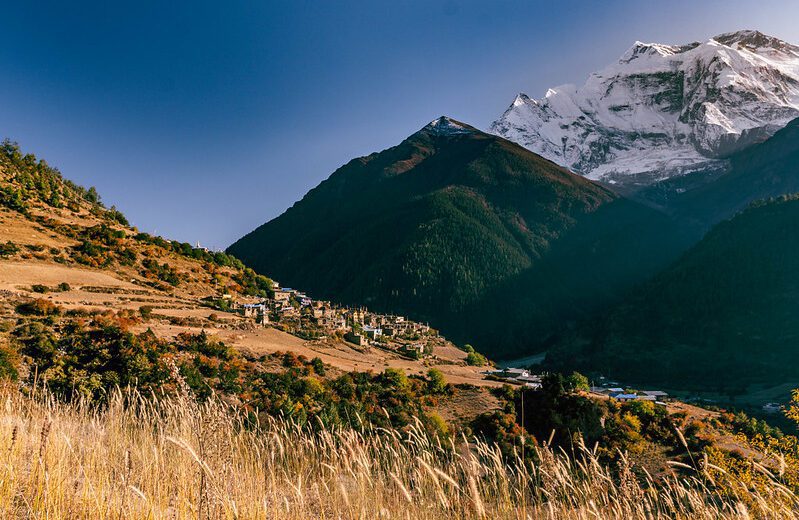Lobuche Peak is a 6,119 (20075.46ft) above sea level located in the Khumbu region of Nepal. It is a popular trekking peak in Nepal, ideal for climbers seeking their first Himalayan summit. We are talking about the Lobuche East side climbing.
To your surprise, Lobuche peak also doesn’t require any advanced technical skills. However, good physical fitness and trekking experience is a must.
As a top choice for peak climbers, we have created the 19 Days Lobuche Peak package which includes acclimatization day.
Here, we will cover everything to know about the Lobuche Peak cost, accommodation, food, itinerary, map, and other important questions.
About Lobuche Peak East:
This thrilling Lobuche Peak Climbing adventure takes you to the heart of the Everest region, offering a perfect blend of high-altitude climbing, stunning mountain panoramas, and a sense of achievement like no other. Here are some trip facts about Lobuche Peak East climbing.
Another thing is that the Lobuche Peak Climbing expedition offers a challenging yet rewarding experience for experienced climbers. However, the ascent to Lobuche Peak (6,119m) requires technical skills and proper acclimatization to the high-altitude environment.
What is the elevation and height of Lobuche Peak?
The elevation and height of Lobuche Peak East is approximately 6,119 meters (20,075 feet) above sea level. Before the summit, the elevation of Lobuche High Camp that you will be camping is 5,400 meters. Similarly, from the high camp to Lobuche East Summit, it takes 8 to 10 hours to reach and return back.
The benefit of Climbing Lobuche Peak:
The benefit of climbing Lobuche Peak provides an opportunity to immerse yourself in the Sherpa culture and hospitality, interact with the local Sherpa community, visit ancient monasteries, and gain insights into their mountaineering traditions and way of life. While trekking on the trail, experience the warm friendship and shared passion for the mountains as you connect with fellow climbers from around the world.
Service Included in Lobuche Peak Climbing:
- Private Vehicle service for Airport pick-up & Drop (Both to international airport & domestic airport)
- Welcome dinner in a reputed Nepali restaurant with a live Nepali Cultural program/performance
- Standard Accommodation is provided inside Kathmandu with Breakfast service on the basis of Twin Sharing
- Two way Flight ticket to Lukla either from Kathmandu or Ramechhap, Airport Tax, & Domestic Transfer
- Private Vehicle for Ramechhap Airport during peak season
- Tea house/Mountain Lodge & Tent accommodations during the whole Trek & Climbing
- All meals during the trekking & climbing | Full Board Meal
- 3 times tea/coffee drinks
- Seasonable Fruits after Dinner
- Climbing Crews expenses
- Climbing/Trekking Guide: Government-certified experienced, fluent English speaker, first aid and eco-trained climbing guide.
- Assistant Guide: As per the group size, the assistant guide is provided wherever necessary
- Porters: As per your group, the porter will be hired to carry heavy loads for you during the whole trek
- All permits charged for Trekking & Climbing
- All federal & Local taxes as applicable
- Rent services for a Down jacket & Sleeping Bag upon request
- Company Duffle Bag(for the expedition purpose only) & T-shirt (as a souvenir)
- Trekking map
- Certificate of Climbing Completion
- Group medical Kit Box
- The arrangements of Emergency Helicopter evacuation service according to your Travel insurance company coverage.
- Private vehicle for Final Departure to International Airport
Service Excluded in Lobuche Peak Climbing Cost Exclusion:
- Nepal Visa
- International flight to Kathmandu & return ticket from Nepal
- Your meal at Kathmandu besides welcome dinner, farewell dinner, and breakfast
- The entire cost of beverages (except hot drinks mentioned in the inclusion list), mineral water & beer
- Travel Insurance (must include helicopter evacuation)
- Tipping to Guide & Porter or any other climbing crew
- Climbing equipment of personal nature
- Items not included in the inclusion list come under your expenses
People Ask About Lobuche Peak Climbing Cost:
What are the types of Accommodations found during the Lobuche Peak Adventure?
During a Lobuche Peak Adventure, you will find Teahouses, lodges, and camping tents. Teahouses are the most common form of accommodation that will provide basic facilities like beds, blankets, & common dining areas. Above 4,000m, most of the accommodations are tea houses, and the cost ranges from USD 10 to USD 20 per head.
Lodges are slightly better than teahouses as they often have private rooms with attached bathrooms and are only available under 4,000m altitude. Lodges also have common dining areas where you can enjoy your meals with other trekkers. Staying in the lodges can cost around USD 15 to USD 50 according to quality and facilities.
During Lobuche Base Camp or before the summit, Camping is the only method to have a good rest as there will be no teahouses or lodges. Camping cost is included in the package price.
Lobuche Peak Climbing Outline Itinerary
According to the outline itinerary, the time to trek from one destination to another may change according to your physical fitness of yours. Even though it may take extra time to trek from one place to another, there will be no change to our services. Thus, here is a perfect itinerary for Lobuche Peak East Climbing in Nepal"
- Day 01: Arrival in Kathmandu & a short drive to your hotel via private vehicle
- Day 02: Sightseeing in Kathmandu & Preparing gear for the trek
- Day 03: Flight to Lukla from Ktm(30 min) or Ramechhap(15-20min flight) & 3-4 hour Short hike to Phakding
- Day 04: 5-6 hour Trek to Namche Bazar (3,440m altitude)
- Day 05: Acclimatization Day at Namche Bazar
- Day 06: 5-6 hour Trek to Tengboche Monastery (3,867m) from Namche Bazar
- Day 07: Trek to Dingboche 5/6 hours (4,410m altitude)
- Day 08: Acclimatization Day at Dingboche
- Day 09: 5-6 hour Lobuche Trek (4,940m)
- Day 10: Trek to Everest Base Camp-5,364m via Gorakshep-5,164m
- Day 11: Hike to Kalapathar-5,644m & Trek Back to Lobuche-4,940m (6/7 hour)
- Day 12: Trek to Lobuche High Camp-5,400m (3/4 hour)
- Day 13: From Lobuche High Camp to Summit-6,119m & Return back to Lobuche High Camp (8/10 hour)
- Day 14: Contingency Day (can be skipped if everything goes well)
- Day 15: Trek back to Pangboche-3,985m (7/8 hour)
- Day 16: Pangboche to Namche Bazar (5/6 hour)
- Day 17: Head back to Lukla from Namche Bazar (6/7 hour)
- Day 18: Return back to Ktm or Ramechhap
- Day 19: Escort to Airport & Final Departure
Itinerary Overview:
To start your trek and peak climbing to Lobuche, first of all, you need to reach Lukla which is the starting point. The journey begins with a picturesque flight into the high-altitude airport at Tenzing Hillary Airport Lukla. As a matter of fact, Lukla Airport is considered of the top 10 dangerous airports in the world.
Note: During the spring and autumn season, Lukla flights will always operate from Ramechhap instead of Kathmandu. So, it will be a 4-5 hour drive from Kathmandu to Ramechhap. From Ramechhap it is just a 15-20 min flight from Ramechhap to Lukla.
Following the route from Everest Base Camp Trek, the standard trekking route deviates from our trail to Lobuche Peak & then High Camp. High Camp is located at 5,400 meters above sea level, whereas Lobuche Base Camp is located in the Lobuche Village proper.
Our climbing Sherpa crew will instruct/refresh climbers on the fundamental use of the climbing equipment once they arrive at Lobuche Base Camp. To avoid the strong winds later in the day, we start the summit ascent around 2:00 AM. Depending on the experience of the climbers, we assign one climbing guide for every 2-4 climbers for their safety.
How Long Does it Take to Climb Lobuche Peak?
Lobuche Peak usually takes around 19 days, with the summit attempt typically occurring on Day 13. On the summit day itself (Day 13 in this case), the climb from the High Camp to the summit of Lobuche Peak, which is at an elevation of 6,119 meters or 20,075 feet, usually takes approximately 3 to 4 hours.
However, the specific duration of the climb can vary depending on various factors such as weather conditions, acclimatization needs, and the climbing experience and fitness level of the individuals involved.
Lobuche Peak Climbing Map:
Lobuche Peak Climbing Difficulty & Preparation:
Lobuche Peak Climbing has a PD+ difficulty rating and is regarded as a technical climbing peak. A typical workout will not be adequate to prepare for this Peak Climbing, nor is it suitable for amateurs or beginners. It is crucial to have a flexible body, good knowledge of fundamental climbing techniques, and expertise using your harness, crampons, ice axe, and carabiner. For more information about difficulty factors, check out "Lobuche Peak Climbing Difficulty".
How complex and difficult is climbing Lobuche Peak?
-Lobuche East Climbing is a trekking and peak climbing program that will use extra energy and leave you exhausted by the time you reach the summit.
-The 45° snow wall top is going to be the roughest section, and getting to the 6,119m summit will be incredibly difficult.
- After passing through Lobuche Village, the terrain becomes rocky, steeper and steeper, with snowy slopes, and chilly. The trail is quite steeply ascending.
Are there any technical climbing skills required to climb Lobuche Peak, such as ice climbing or the use of ropes?
Yes, climbing Lobuche Peak East requires certain technical climbing skills such as ice climbing and climbing techniques such as using crampons, ice axes, and proper footwork. Similarly, it is also highly recommended that climbers have prior experience & training in climbing before attempting Lobuche Peak East.
Which is the best beginner-friendly climbing peak in Nepal?
Pokalde Peak, which is only 5,806 meters above sea level, and Yala Peak are the two best places to begin peak climbing if you're a beginner and wish to do it in Nepal. You should attempt the Lobuche Peak Climb after gaining some experience with ice climbing or peak climbing.
Even so, this preparation and guide can be helpful for you if you wish to climb Lobuche Peak for the first time since you are an avid trekker who has also engaged in rock climbing activities. The preparation for climbing Lobuche Peak will only be briefly discussed here. Check out our "Lobuche Peak Climbing Guide" for a comprehensive, detailed guide to climbing the peak, which includes information on expenses, packing lists, the ideal time of year, and much more.
Every peak climber must have the stamina and strength to continue moving forward. You must complete the following to strengthen your core in preparation for peak climbing:
- Multi-Day Hiking Program for better pace management.
- Rock climbing, ice climbing, and bouldering for strength and equipment knowledge.
- Cardio exercises to build a flexible body
- Diet planning to maintain a healthy body
Similarly to this, there are other factors you should take into account while organizing your peak climbing, such as the best weather and packing lists.
We need every success rate possible, so factors like packing lists and weather are very important. Duffel bags, headgear, body gear, footgear, gadgets, and other accessories are items found on packing lists. Keep in mind that choosing practical gear over pricey gear is what makes climbing Lobuche Peak successful. Similarly, when it comes to the best time for climbing Lobuche Peak, Spring, and Autumn seasons are perfect and during the month of April and October.
You should surely check out "Best Time for Lobuche Peak Climbing" if you are thinking about climbing.
Lobuche Peak Challenges:
Here are some of the main challenges associated with Lobuche Peak:
- High Altitude:
With an elevation of 6,119 meters (20,075 ft) above sea level, the Lobuche Peak East has a thin layer of oxygen which poses threats like altitude sickness, reduced oxygen levels, & decreased physical performance. - Technical Climbing:
Even though Lobuche Peak Climbing is a beginner-friendly peak, it still requires technical climbing skills including ice climbing, steep slopes, & traversing ridges. - Weather Conditions:
Another challenging situation when climbing Lobuche Peak East is the unpredictable weather such as strong winds, snowfall, & low visibility. - Physical Endurance:
Long trekking days, steep ascents, & extended periods of exertion can be physically demanding which is why Lobuche Peak requires a good physical fitness and endurance.
Why Nepal Peak Adventure above others?
Nepal Peak Adventure ensures the highest standards of safety and comfort throughout the Lobuche Peak Climbing expedition. We provide top-quality climbing equipment, high-altitude tents, nutritious meals, and experienced Sherpa climbers to support your journey. Our team is dedicated to making your climbing experience smooth, successful, and memorable.
Join us on this extraordinary 19-day Lobuche Peak Climbing expedition and push your limits to reach new heights. Stand atop the summit, surrounded by the majestic Himalayas, and savor the unparalleled sense of achievement and awe. Nepal Peak Adventure is committed to making your Lobuche Peak Climbing expedition a safe, thrilling, and unforgettable adventure of a lifetime.
